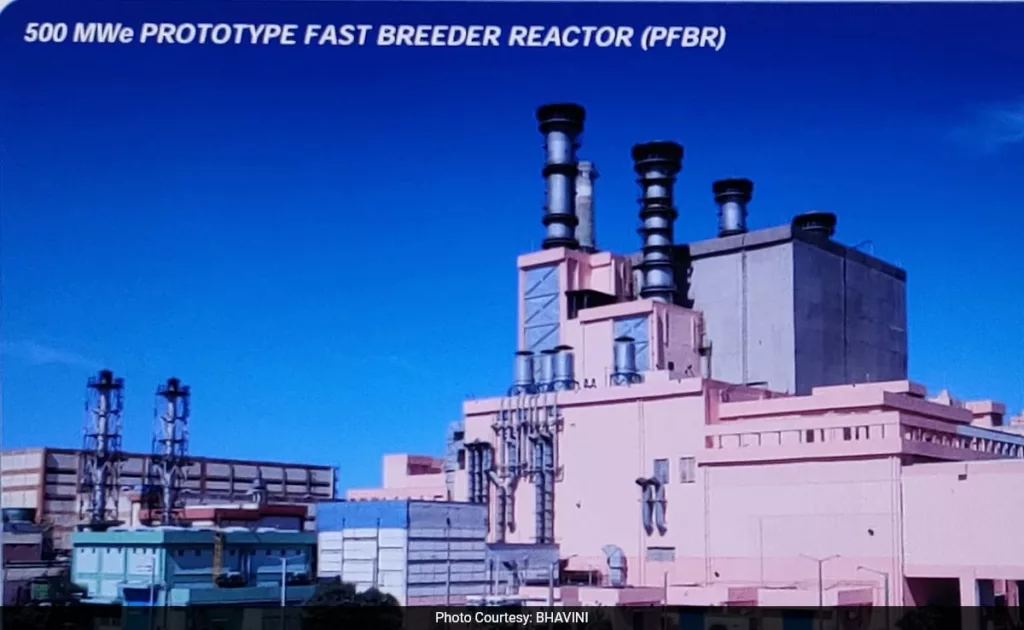India’s atomic energy program has crossed a big hurdle, the country’s most advanced and most complex nuclear reactor the Prototype Fast Breeder Reactor (PFBR) located at Kalpakkam in Tamil Nadu has finally got approval from India’s atomic regulator to start loading the nuclear fuel and then to go ahead and initiate the controlled chain reaction. “It is a huge milestone for India’s self-reliant atomic energy program,” confirmed Dinesh Kumar Shukla, Chairman of the Atomic Energy Regulatory Board who added that the “PFBR is an inherently safe reactor”.
This development now marks the use of plutonium as a nuclear fuel and more importantly the first steps at using thorium as an atomic energy source. India has limited reserves of uranium and all plutonium is anyways generated in atomic plants as natural plutonium does not exist, on the other hand, India has huge reserves of thorium and hence the country is mastering and developing complex technology to use thorium as fuel. Experts say if India can tap thorium as a fuel, the country can be assured of energy independence and find the potential ‘akshay patra’ for energy that will last for more than three centuries.
A fast breeder reactor is very unique and to a layperson these defy basic logic since breeder reactors produce more fuel than they consume and that is why some describe these reactors as an endless source of energy. The word ‘fast’ in these reactors comes from the use of high-energy fast neutrons. India has a functional Fast Breeder Test Reactor (FBTR) at Kalpakkam that has been functioning for the last 39 years.
Atomic Energy Regulatory Board or AERB said, “This permission marks a significant step towards operationalization of PFBR. The 500MWe sodium-cooled Prototype Fast Breeder Reactor (PFBR) being commissioned by BHAVINI at Kalpakkam is a significant milestone in country’s nuclear power programme”.
“The AERB had been carrying out extensive safety review and assessment through multi-tier safety review mechanism. The safety reviews are complemented with periodic inspections and observation by resident site observer team,” it added. If all goes well, it could become operational in a few months.
In 2003, the government approved the creation of Bhartiya Nabhikiya Vidyut Nigam Ltd (BHAVINI) to construct and operate India’s most advanced nuclear reactor-Prototype Fast Breeder Reactor (PFBR), which is a 500 MW liquid sodium cooled reactor. As per BHAVINI it “got clearance for fuel loading, first criticality, and also low power physics experiments at one go”.
The initiation of fuel loading at PFBR marks the entry of India into its second stage of the atomic energy program. Here spent fuel from India’s existing reactors is used. Incidentally, the moniker ‘fast’ is not about quick construction but because it uses ‘fast neutrons’ as part of the fission reaction. It uses the man-made element plutonium as fuel.
The PFBR has been in the making for the last 20 years and being a first-of-kind reactor, delays were expected and since no country shares such complex technology, it had to be mastered indigenously. BHAVINI estimated it has cost Rs 6,840 crore and over years cost overrun did happen from its earlier approved cost of Rs 5,677 Crore.
In line with the true spirit of Aatmanirbhar Bharat, the PFBR has been fully designed and constructed indigenously by BHAVINI with significant contributions from more than 200 Indian industries including MSMEs. Once commissioned, India will only be the second country after Russia to have commercially operating Fast Breeder Reactor.
The Fast Breeder Reactor (FBR) will initially use the Uranium-Plutonium Mixed Oxide (MOX) fuel. The Uranium-238 “blanket” surrounding the fuel core will undergo nuclear transmutation to produce more fuel, thus earning the name ‘Breeder’. The use of Throium-232, which in itself is not a fissile material, as a blanket is also envisaged in this stage. By transmutation, Thorium will create fissile Uranium-233 which will be used as fuel in the third stage. FBR is thus a stepping stone for the third stage of the program paving the way for the eventual full utilization of India’s abundant thorium reserves.
On March 4, 2024, Prime Minister Narendra Modi himself inspected the PFBR and witnessed the ‘core loading’ since then activities have accelerated. The Department of Atomic Energy (DAE) says in terms of safety, the PFBR is an advanced third-generation reactor with inherent passive safety features ensuring a prompt and safe shut down of the plant in the event of an emergency. Since it uses the spent fuel from the first stage, FBR also offers a great advantage in terms of a significant reduction in nuclear waste generated, thereby avoiding the need for large geological disposal facilities.
According to the DAE, notably, despite the advanced technology involved, both the capital cost and the per unit electricity cost is comparable to other nuclear and conventional power plants.
The growth of the Indian nuclear power program is imperative to meet the twin goals of energy security and sustainable development. As a responsible nuclear power with advanced technology, India remains committed to expanding peaceful applications of nuclear technology, both in the power and non-power sectors, while ensuring the security of nuclear and radiological materials.
Once the DAE gains confidence, two more Fast Breeder Reactors will be constructed at Kalpakkam.
